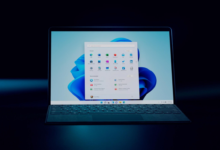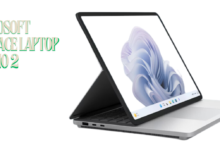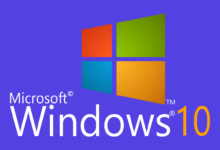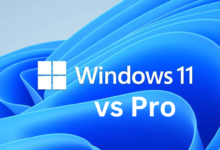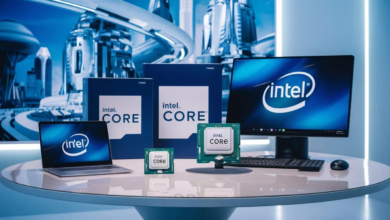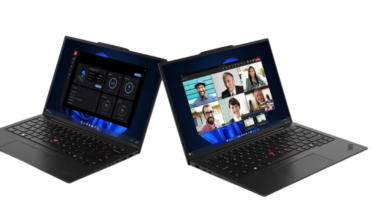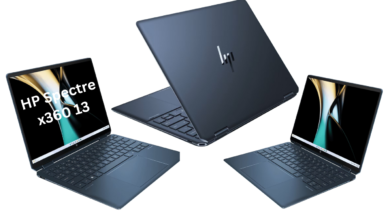Upgrading to Windows 11 Home can offer enhanced features and improved security, but ensuring your device meets the necessary system requirements is essential. Understanding these requirements will help you avoid potential issues during installation and guarantee that you can fully leverage the new features of Windows 11 Home. Let’s explore what you need to know about the minimum system requirements, additional hardware needs, and the changes with upgrading.

Table of Contents
What Minimum Processor Speed and Type Are Required?

Upgrading to Windows 11 Home involves ensuring that your device’s processor meets specific criteria for efficiently handling the new operating System. Here’s a detailed look at what’s required:
Processor Speed and Type Requirements
- Speed: The processor must have a clock speed of at least 1 gigahertz (GHz) or faster. Ensures that the CPU can manage the tasks and processes demanded by Windows 11 Home without lagging.
- Cores: The processor should have 2 or more cores. Multi-core processors are essential for multitasking and running modern applications smoothly.
- Type: The processor must be a compatible 64-bit processor or System on a Chip (SoC). Windows 11 Home does not support 32-bit processors due to the enhanced capabilities and performance requirements of the new operating System.
Why Is Processor Speed and Type Important?
- Performance: A processor with a higher clock speed and multiple cores can handle more instructions per second, improving overall performance. It is essential for video editing, gaming, and running multiple applications simultaneously.
- Compatibility: The transition to 64-bit architecture allows Windows 11 Home to leverage more advanced features and security enhancements, ensuring compatibility with modern applications and hardware.
- Efficiency: Multi-core processors improve efficiency by distributing tasks across several cores, which can enhance performance for multi-threaded applications and processes.
Popular Processors That Meet the Requirements
Here are some examples of processors that meet the minimum requirements for Windows 11 Home:
- Intel Processors:
- Intel Core i3, i5, i7, i9 (8th generation and newer): These processors are widely used in laptops and desktops and offer varying performance levels to suit different needs.
- AMD Processors:
- AMD Ryzen 3, 5, 7, 9 (2nd generation and newer): Known for their excellent performance in single-threaded and multi-threaded tasks, these processors are ideal for various applications from basic computing to high-end gaming and content creation.
- ARM Processors:
- Qualcomm Snapdragon 7c, 8c, 8cx (for ARM-based devices): These processors are designed for lightweight, efficient performance in ARM-based Windows devices, providing good battery life and responsiveness.
Why Are These Specific Processors Recommended?
- Future-Proofing: Using processors from the Intel 8th generation and AMD Ryzen 2nd generation and newer ensures that your device can handle future updates and more demanding applications without needing an immediate upgrade.
- Performance Balance: These processors strike a good balance between performance, power consumption, and cost, making them suitable for a wide range of users, from casual users to professionals.
- Support for Advanced Features: These processors support advanced features such as virtualization, enhanced security measures, and better integration with other hardware components, which are essential for getting the most out of Windows 11 Home.
Checking Your Processor
To check if your current processor meets these requirements, follow these steps:
- Windows Settings:
- Go to Settings > System > About.
- Look under Device Specifications to find your processor details.

- Task Manager:
- Press Ctrl + Shift + Esc to open Task Manager.
- Go to the Performance tab and select CPU to view detailed information about your processor.

- System Information:
- Press Windows + R, type msinfo32, and press Enter.
- Look under System Summary to see detailed information about your processor.


Upgrading Your Processor
If your current processor does not meet the requirements for Windows 11 Home, consider upgrading. Could involve replacing the CPU if your motherboard supports a newer processor or, in some cases, upgrading to a new computer that meets all the necessary specifications.
In summary, ensuring that your processor meets the minimum speed and type requirements is crucial for a smooth and efficient experience with Windows 11 Home. A compatible processor will provide the necessary performance and support future updates and advanced features of the operating System.
How Much RAM Is Needed for Windows 11 Home?
When considering an upgrade to Windows 11 Home, it’s crucial to understand the RAM requirements to ensure smooth and efficient performance. Here’s a comprehensive look at what you need to know about RAM for Windows 11 Home:
Minimum RAM Requirements
RAM (Random Access Memory) is vital for your system’s performance, affecting how quickly applications open and run. For Windows 11 Home, the minimum RAM requirement is:
- 4 gigabytes (GB)
Why Is RAM Important?
RAM is crucial because it stores the data your CPU needs to access quickly. More RAM allows your system to handle more tasks simultaneously without slowing down. While 4 GB is the minimum requirement, having more RAM can significantly enhance your computing experience, especially if you run multiple applications or perform memory-intensive tasks.
Recommended RAM for Optimal Performance
While 4 GB is the minimum, it is recommended to have more for better performance:
- 8 GB: Suitable for most users who run standard applications and multitask.
- 16 GB is ideal for power users who use heavy applications like video editing software, virtual machines, and advanced gaming.
- 32 GB or more: This is recommended for professionals who require high-performance computing, such as developers, data scientists, and graphic designers.
Increasing your computer RAM improves performance and future-proofs your device against more demanding applications and updates.
What Storage Capacity Is Required for Windows 11 Home?
Understanding Storage Requirements
Your device must have sufficient storage to install and run Windows 11 Home. The minimum storage requirement is:
- 64 GB or larger
Why Storage Capacity Matters
Storage capacity is essential for installing the operating system and storing files, applications, and updates. Over time, Windows 11 Home will require additional space for updates and new features. A larger storage capacity ensures that your device remains functional and responsive as you install more programs and receive system updates.
What to Consider for Ongoing Storage Needs
While 64 GB is the minimum requirement, you should consider opting for a larger storage device if you plan to store many files or install many applications. Additionally, having extra storage can accommodate future updates and prevent your system from running low on space.
Types of Storage Devices
When considering storage, it’s also essential to look at the type of storage device:
- HDD (Hard Disk Drive): This is a traditional storage option. It is generally slower but offers higher capacities at lower costs.
- SSD (Solid State Drive): Faster than HDDs, leading to quicker boot times, faster file transfers, and improved overall performance. SSDs are recommended for a better Windows 11 experience.
- NVMe SSD: An even faster type of SSD that uses the PCIe interface, offering significantly higher speeds than traditional SSDs. Ideal for users who need top-notch performance.
Why Choose SSD Over HDD?
Switching from HDD to SSD can drastically improve your system’s performance, including faster boot times, reduced application load times, and quicker file transfers. For Windows 11 Home, an SSD is recommended to ensure a smooth and responsive user experience.
What About System Firmware and Security Features?
System Firmware Requirements
Windows 11 Home requires specific system firmware settings to ensure secure and reliable operation:
- System Firmware: Your device must have UEFI (Unified Extensible Firmware Interface), a modern type of firmware that replaces the legacy BIOS and is required for secure boot functionality.
- Secure Boot Capable: Secure Boot is a security standard ensuring only trusted software can run during startup. It helps protect your system from malware that might try to interfere with the boot process.
Trusted Platform Module (TPM)
- TPM Version 2.0: Trusted Platform Module (TPM) is a hardware-based security feature that stores cryptographic keys and helps secure boot processes. Windows 11 Home requires TPM version 2.0 to enhance system security and ensure that only trusted software can run.
Why Are Firmware and Security Features Important?
These requirements are crucial for maintaining the security and integrity of your system. Boot and TPM help protect against firmware attacks and unauthorized access, ensuring that your operating system is secure and trustworthy.
How to Check for UEFI and TPM 2.0
Checking UEFI
- Enter BIOS/UEFI: Restart your computer and enter the BIOS/UEFI settings. usually involves pressing a key like F2, F10, DEL, or ESC during startup.
- Look for UEFI Settings: Check if UEFI is enabled. If your system is still using a Legacy BIOS, you might need to switch to UEFI.
Checking TPM 2.0
- Open Device Manager: Right-click the Start button and select “Device Manager.”
- Locate Security Devices: Look for “Security devices” and expand the list.
- Check for TPM: Ensure that “Trusted Platform Module 2.0” is listed. If not, you may need to enable it in the BIOS/UEFI settings.
Enabling Secure Boot
- Enter BIOS/UEFI: Restart your computer and enter the BIOS/UEFI settings.
- Navigate to Boot Options: Find the Boot section and locate the Secure Boot option.
- Enable Secure Boot: Set Secure Boot to Enabled. Save and exit the BIOS/UEFI settings.
Why Are These Checks and Settings Important?
Ensuring that UEFI and TPM 2.0 are enabled and that the Secure Boot is active is essential for the security and proper functioning of Windows 11 Home. These features help protect your system from malware and unauthorized access during the boot process.
What Graphics Card Specifications Are Required?
When preparing to upgrade to Windows 11 Home, ensuring your graphics card meets the specifications is crucial for optimal performance and visual experience. Here’s an in-depth look at the graphics card requirements and their importance.
Minimum Graphics Card Requirements
To ensure that your device can handle graphics-intensive tasks and provide a smooth visual experience, your graphics card must meet the following criteria:
- DirectX 12 Compatibility: The graphics card must support DirectX 12 or later, a set of APIs (Application Programming Interfaces) for rendering graphics in games and applications.
- WDDM 2.0 Driver: The graphics card should have a driver that supports Windows Display Driver Model (WDDM) 2.0. This driver model enhances the graphics performance and stability of Windows 11.
Why Are Graphics Card Specifications Important?
A compatible graphics card lets you fully utilize Windows 11 Home’s visual features, such as the new user interface and graphical effects. It also supports gaming and multimedia applications that rely on advanced graphics capabilities.
Popular Graphics Cards That Meet the Requirements
Some of the popular graphics cards that meet the requirements for Windows 11 Home include:
- NVIDIA GeForce GTX 600 series and newer
- AMD Radeon HD 7000 series and newer
- Intel HD Graphics 4000 and newer
These graphics cards meet the minimum requirements and provide enhanced performance for gaming, video editing, and other graphics-intensive tasks.
Integrated vs. Dedicated Graphics
When considering graphics capabilities, it’s essential to understand the difference between integrated and dedicated graphics:
- Integrated Graphics: Built into the CPU, suitable for basic tasks like web browsing, office applications, and light media consumption.
- Dedicated Graphics: Separate GPU that provides higher performance, ideal for gaming, video editing, and other demanding applications.
Why Choose Dedicated Graphics?
A dedicated graphics card is recommended for users who require higher performance for gaming, video editing, or other graphics-intensive tasks. Compared to integrated graphics, it provides better performance and can handle more demanding applications.
What Display Specifications Are Needed?
Your display must meet certain specifications to fully enjoy Windows 11 Home’s features and enhancements. Here’s a detailed overview of the required display specifications and their significance.
Minimum Display Requirements
Your display must meet certain specifications to ensure compatibility with Windows 11 Home:
- Resolution: High definition (720p) display.
- Size: The display must be more excellent than 9 inches diagonally.
- Color Depth: 8 bits per color channel.
Why Are Display Specifications Important?
These requirements ensure that your display can render Windows 11 Home’s new graphical interface correctly. A higher resolution and larger size provide a better visual experience, especially for tasks that involve detailed visuals or multiple windows.
Optimal Display Specifications
While 720p is the minimum, for a better visual experience, consider displays with higher resolution and better colour accuracy:
- Full HD (1080p) or higher: Provides a more transparent and detailed picture, suitable for most tasks.
- 4K UHD is ideal for professional work like graphic design, video editing, and gaming, offering the highest level of detail and color accuracy.
Why Choose Higher Resolution Displays?
Higher-resolution displays enhance your viewing experience by providing more detail and clarity. They are especially beneficial for tasks that require precise visuals, such as graphic design, video editing, and gaming.
What Are Copilot+ PCs and Their Requirements?
Windows 11 Home introduces a new class of devices known as Copilot+ PCs, designed to enhance productivity and user experience with advanced artificial intelligence (AI) capabilities. Here’s an in-depth look at what Copilot+ PCs are and their specific requirements.
Understanding Copilot+ PCs
Copilot+ PCs are a class of Windows 11 devices powered by a neural processing unit (NPU) capable of performing 40+ trillion operations per second (TOPS). These devices are designed to handle AI-intensive processes like real-time translations and image generation.
Minimum System Requirements for Copilot+ PCs
In addition to the standard requirements for Windows 11 Home, Copilot+ PCs must include the following hardware:
- Processor: A compatible processor or System on a Chip (SoC), such as the Snapdragon® X Plus and Snapdragon® X Elite.
- RAM: 16 GB DDR5/LPDDR5.
- Storage: 256 GB SSD/UFS.
Why Choose Copilot+ PCs?
Copilot+ PCs offer advanced capabilities for users who need high-performance computing for AI-driven tasks. These devices are ideal for professionals who work with large datasets, perform complex computations, or require real-time processing capabilities.
What Are the Internet and Account Requirements?
Certain internet and account requirements must be met when upgrading to or setting up Windows 11 Home to ensure a smooth installation and optimal use of the operating system. Here’s a comprehensive look at these requirements and their significance.
Internet Connection and Microsoft Account
Windows 11 Home requires an internet connection and a Microsoft account during the initial device setup. Here’s why these requirements are essential:
- Internet Connection: Required for performing updates, downloading features, and using cloud services.
- Microsoft Account: Necessary for synchronizing settings, accessing the Microsoft Store, and using features like OneDrive and Microsoft Teams.
Switching Out of S Mode
Switching out of S mode requires an internet connection if your device is running Windows 11 Home in S mode. S mode is a streamlined version of Windows that offers enhanced security and performance by only allowing apps from the Microsoft Store. Switching out of S mode gives you more flexibility by allowing you to install apps from other sources.
Why Are These Requirements Important?
Having an internet connection and a Microsoft account ensures that you can fully utilize the features of Windows 11 Home. It allows you to keep your System Up-to-date, access cloud services, and synchronize settings across multiple devices.
What Are the Feature-Specific Requirements for Windows 11 Home?
Windows 11 Home introduces several advanced features that enhance user experience, productivity, and security. However, some of these features have specific hardware and software requirements. Here’s a detailed overview of the feature-specific requirements for Windows 11 Home.

Additional Hardware and Software Requirements
Some Windows 11 Home features have increased requirements beyond the minimum specifications. Here are a few key features and their specific requirements:
- Automatic Super Resolution: Available only on Copilot+ PCs.
- Live Captions: Available only on Copilot+ PCs.
- Windows Studio Effects: Full experience available only on Copilot+ PCs with NPUs.
5G Support
- 5G Capable Modem: Required for devices that support 5G connectivity.
Auto HDR
- HDR Monitor: Auto HDR is required to enhance the visual quality of games and videos.
DirectStorage
- NVMe SSD: Required to store and run games that use the Standard NVM Express Controller driver.
- DirectX 12 GPU with Shader Model 6.0 support: Necessary for optimal performance.
Windows Hello
- Camera or Fingerprint Reader: Required for biometric authentication.
- PIN or Security Key: Alternative authentication methods.
Additional Feature Requirements
- BitLocker to Go: Requires a USB flash drive (available in Windows Pro and above editions).
- Client Hyper-V: Requires a processor with second-level address translation (SLAT) capabilities (available in Windows Pro and above editions).
- Presence: Requires a sensor to detect human distance from the device or intent to interact.
- Voice Typing: Requires a PC with a microphone.
- Wake on Voice: Requires Modern Standby power model and microphone.
Why Are Feature-Specific Requirements Important?
Understanding the requirements for different features helps determine if your device can support them. This ensures that you can fully utilize Windows 11 Home’s capabilities and advanced functionalities.
How to Handle Apps and Features That Are No Longer Available in Windows 11 Home
Upgrading to Windows 11 Home may result in deprecating or removing specific features and applications present in previous versions of Windows. Understanding how to handle these changes can help you transition smoothly. Here’s a guide on managing apps and features that are no longer available.

Deprecated and Removed Features
When upgrading to Windows 11 Home, some features from Windows 10 may be deprecated or removed. Here’s a list of critical features impacted:
- Cortana: Removed as a standalone app.
- Internet Explorer: Replaced by Microsoft Edge with IE mode.
- Maths Input Panel: Removed, with Math Recognizer installed on demand.
- News & Interests: Evolved into the Widgets feature.
- Quick Status: Removed from the Lock screen.
- S Mode: Available only for Windows 11 Home Edition.
- Snipping Tool and Snip & Sketch: Merged into a single experience.
Critical Changes in Start and Taskbar
- Start Menu: Significant changes include the removal of Live Tiles and limitations on customizations.
- Taskbar: Changes include the removal of People and the limitation to a single alignment location.
Removed Features and Applications
- Timeline: Removed, with similar functionality available in Microsoft Edge.
- Word Pad: Will be removed in favour of Microsoft Word and Windows Notepad.
- Windows Mixed Reality: Deprecated and will be removed in version 24H2.
Why Are Feature Deprecations Important?
Understanding feature deprecations helps you prepare for changes and adjust your workflows accordingly. Some features might be replaced with new functionalities, while others may no longer be supported, impacting your device’s use.
Available Apps and Alternatives
While some apps and features are no longer included by default, they are available for download from the Microsoft Store:
- 3D Viewer, OneNote for Windows 10, Paint 3D, Skype
Why Are App and Feature Changes Important?
Staying informed about app and feature changes helps you adapt to the new environment in Windows 11 Home. It ensures that you can continue to use essential tools and find alternatives for deprecated features.
This detailed guide provides a comprehensive overview of what you need to know about installing and using Windows 11 Home. From system requirements to feature-specific needs and changes, understanding these aspects will help you make the most of your upgrade and ensure a smooth transition to the new operating system.
